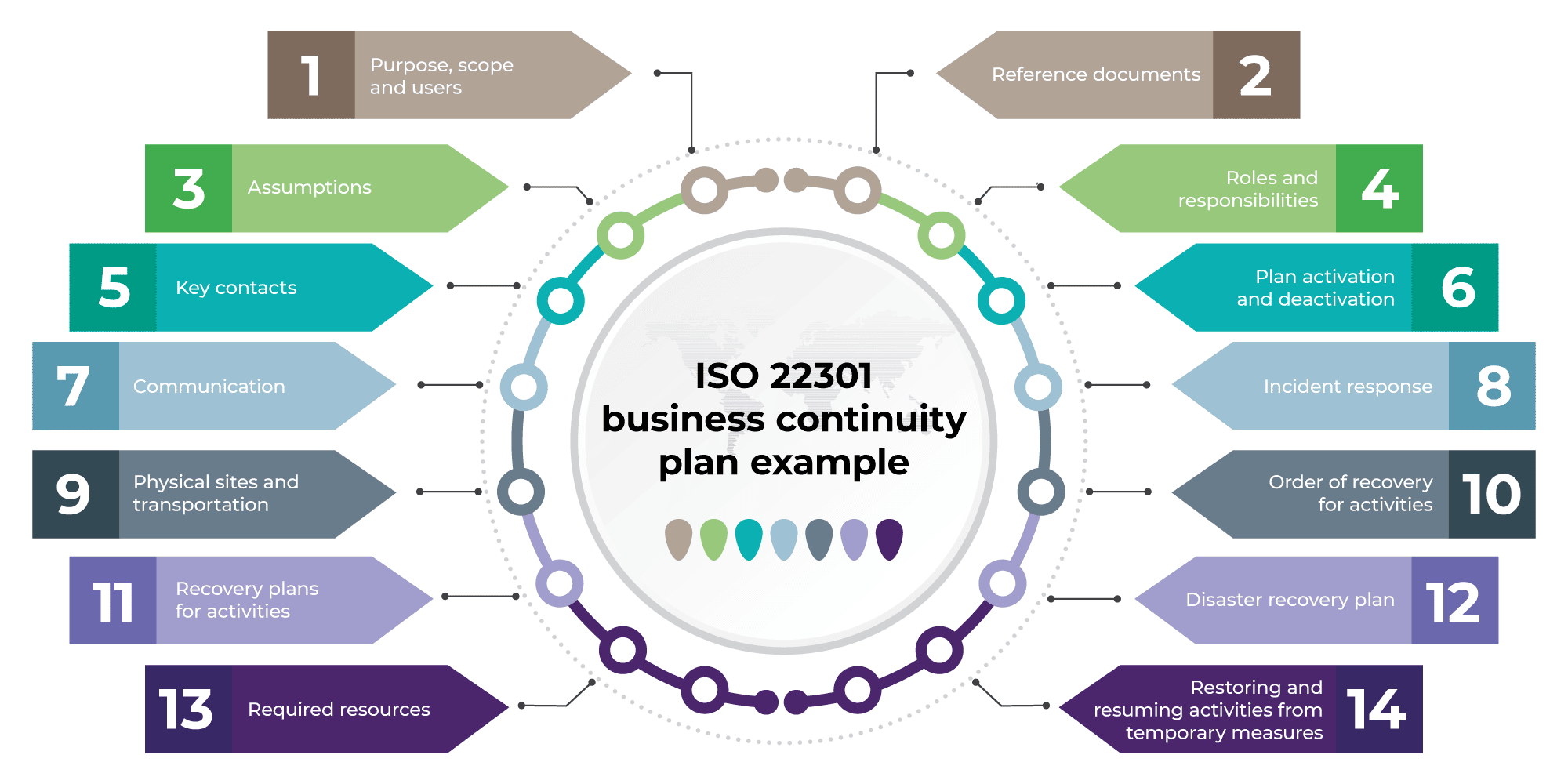In my experience, companies usually find two things in their business continuity or information security management to be the most difficult: risk assessment, and business continuity planning. Here I’ll give you some tips on business continuity plans (BCP).
ISO 22301 business continuity plan should include Purpose, scope and users, Reference documents, Assumptions, Roles and responsibilities, Key contacts, Plan activation and deactivation, Communication, Incident response, Physical sites and transportation, Order of recovery for activities, Recovery plans for activities, Disaster recovery plan, Required resources, and Restoring and resuming activities from temporary measures.
What is a business continuity plan?
According to ISO 22301, business continuity plan is defined as “documented procedures that guide organizations to respond, recover, resume, and restore to a pre-defined level of operation following disruption.” (clause 3.5)
This basically means that BCP focuses on developing plans/procedures, but it doesn’t include the analysis that forms the basis of such planning, nor the means of maintaining such plans – all these are required elements of business continuity management that are necessary for enabling successful contingency planning.
To read more about analysis, see Five Tips for Successful Business Impact Analysis, and to find out how to interpret the analysis, read Can business continuity strategy save your money?.
Business continuity plan example
Here’s what I found to be the optimal structure for the business continuity plan for smaller and midsize companies, and what each section should include:
Purpose, scope and users – why this plan is developed, its objectives, which parts of the organization it covers, and who should read it.
Reference documents – to which documents does this plan relate? Normally, these are Business Continuity Policy, Business Impact Analysis, Business Continuity Strategy, etc.
Assumptions – the prerequisites that need to exist in order for this plan to be effective.
Roles and responsibilities – who will be responsible for managing the disruptive incident, and who is authorized to perform certain activities in case of a disruptive incident – e.g. activation of the plans, urgent purchases, communication with media, etc.
Key contacts – contact details for persons who will participate in the execution of the business continuity plan – this is usually one of the annexes of the plan.
Plan activation and deactivation – in which cases can the plan be activated, and the method of activation; which conditions need to exist to deactivate the plan.
Communication – which communication means will be used between different teams and with other interested parties during the disruptive incident. Who is in charge of communicating with each interested party, and the special rules of communication with media and government agencies.
Incident response – how to react initially to an incident in order to reduce the damage – this is very often an annex to the main plan.
Physical sites and transportation – which are the primary and alternative sites, where the assembly points are, and how to get from primary to alternative sites.
Order of recovery for activities – list of all the activities, with precise Recovery Time Objective (RTO) for each.
Recovery plans for activities – description of step-by-step actions and responsibilities for recovering manpower, facilities, infrastructure, software, information, and processes, including interdependencies and interactions with other activities and external interested parties – these are very often annexes to the main plan. To read more about them, see How to write business continuity plans?
Disaster recovery plan – this is normally a type of recovery plan that focuses on recovering the information and communication technology infrastructure. To read more about the relationship between disaster recovery and business continuity, see Disaster recovery vs business continuity.
Required resources – a list of all the employees, third-party services, facilities, infrastructure, information, equipment, etc. that are necessary to perform the recovery, and who is responsible to provide each of them.
Restoring and resuming activities from temporary measures – how to restore business activities back to business-as-usual once the disruptive incident has been resolved.
What I like about ISO 22301 is that it requires all the elements that are necessary for this plan to be useful in case of a disaster (or any other disruption in a company’s activities). However, no standard can help you unless you understand this task seriously – a properly written and comprehensive plan can save your company in tough times, while a superficially written plan will only make things worse.
Click here to see a sample Business Continuity Plan.

 Dejan Kosutic
Dejan Kosutic 






